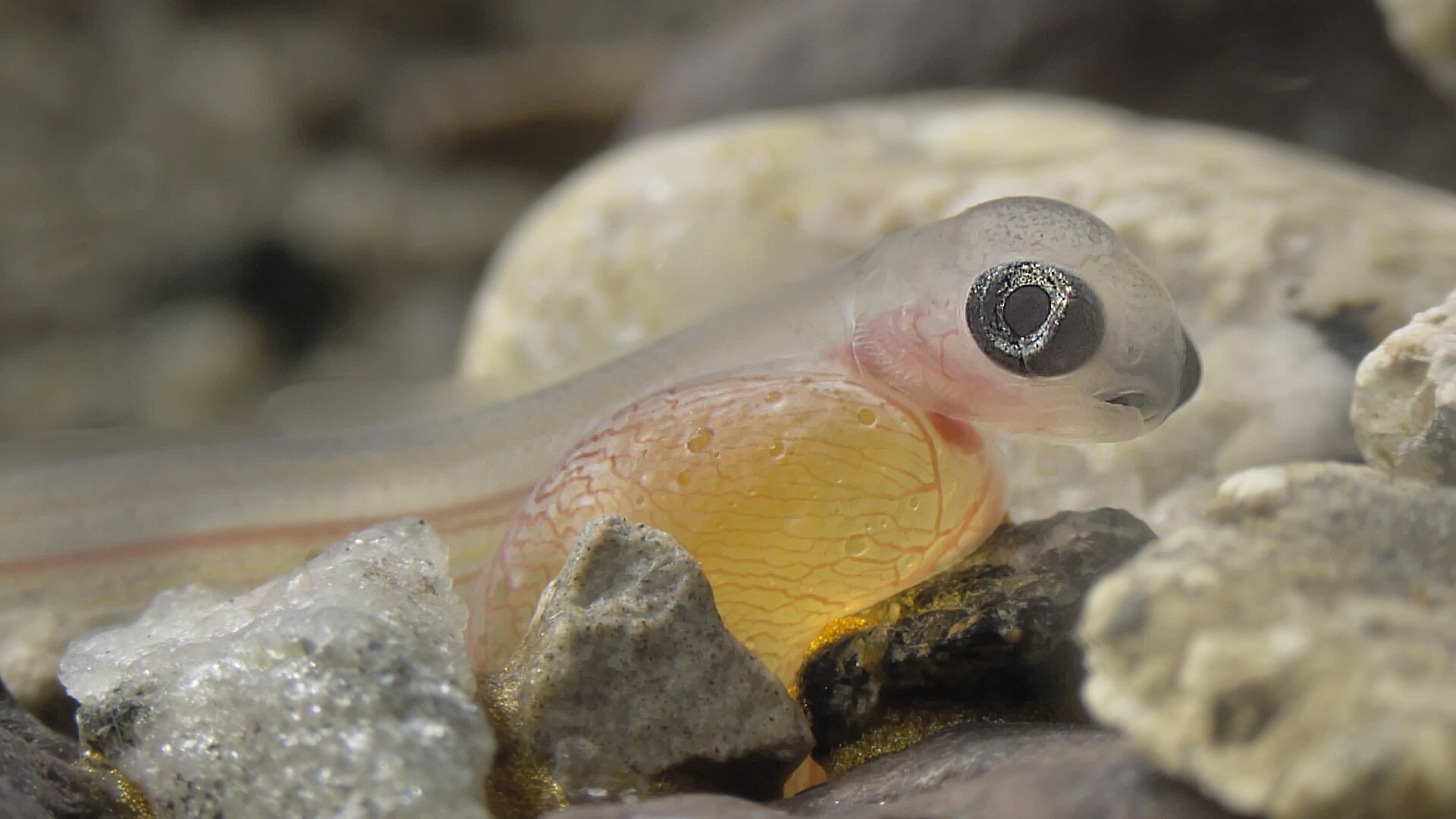Watercourses
Salmon, trout and grayling live side by side in the Tana watercourse. Photo: Mikko Kytokorpi
The wild salmon is a freshwater fish. This is because wild salmon spawn in flowing freshwater. Freshwater offers a highly variable environment. Wild salmon are tough and can live in many places in a watercourse.
Wild salmon live their first few years in a river. The environment varies greatly both within the same watercourse and between different watercourses. The water temperature can vary from 0 degrees in winter to more than 20 degrees in summer. Water velocity varies from still water in lakes to roaring waterfalls and rapids in rivers. The depth of the water varies from shallow water near land to many meters deep. Bottom conditions vary from mud and fine sand to large boulders and solid rock. The oxygen content of the water varies greatly throughout the year and between different parts of the watercourse, but is rarely so low that wild salmon suffocate.
The young salmon can be found in shallow water along the shore of large rivers, in the littoral zone of lakes or in small streams. The most important thing is that they find places to hide from fish-eating animals and that they can find their own food. They have camouflage that makes it difficult for enemies to detect them.
Tough competition
Competition between the young salmon for good hiding places and food is fierce. The young salmon that are best adapted to the conditions in the watercourse take the best places. They are the ones that grow the fastest and have the least chance of being eaten.
Insect larvae are the most important food source for young salmon. In freshwater, they are small and do not provide enough energy for the young salmon to grow. In the sea, there is plenty of food and there is no competition between wild salmon. If the young salmon are to grow up, they must therefore go to the sea. When they are the length of a ballpoint pen, they leave the river to migrate to the sea and grow up.
After one to five years, the adult salmon return to their natal river to give life to new generations. They spawn in running water with enough oxygen for the large roe. The females dig spawning pits in places where the size of the stones in the gravel is appropriate.
We have ruined a lot for wild salmon
We have destroyed wild salmon in many watercourses through hydropower development, physical encroachment, pollution, the introduction of diseases, alien parasites and fish species and escaped farmed salmon. The Norwegian Parliament has given wild salmon special protection in 52 watercourses. We call these national salmon rivers.
Øyerogn. Photo: Arnt Mollan
Plum sack fry. Photo: Arnt Mollan
Did you know that...
Water consists of molecules composed of two hydrogen atoms and one oxygen atom. Fresh water is heaviest at 4.2 degrees and lighter when it is both warmer and colder. Water is lightest when it is frozen into ice. It's a matter of luck. It's easier to skate when the ice floats on top of the water. Imagine if the ice was heavier than water and lay on the bottom. What about the fish?
Parr
A salmon fry with stripes, or what look like finger marks, on its sides is called a parr. It can live in the river for one to five years before changing its appearance and migrating to the sea. By the time it migrates to the sea, it has become silvery and fine, has lost its finger marks and is called a smolt.




